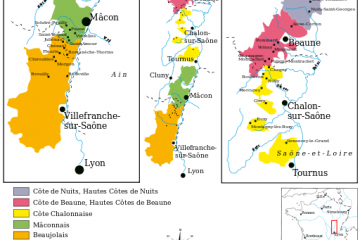Some wine labels can be tricky to understand. Take France, where it’s common to label wines according to the region (or subregion) of production instead of the grape variety. This is useful if you happen to have specialist knowledge and know your Gevrey-Chambertin from your Morey-St-Denis, but it can be intimidating for the casual wine lover.
Bordeaux wine labels certainly fall into this category and can be off-putting for many. The good news is that you don’t need to be a Master of Wine, or speak French, to make sense of Bordeaux labels. Our handy guide will give you everything you need to know and tell you everything you need to look out for, to pick a great bottle every time.
Understanding Bordeaux wine labels
The wines of Bordeaux are widely admired, but can also appear intimidating. When compared with a Chilean Merlot or a California Cabernet Sauvignon, it can be difficult to understand what’s on the label – let alone to know what’s in the bottle! In order to understand Bordeaux wines better, we’ll take a typical label and work our way through it, piece by piece.
Château Cos Labory wine label
Here we’ve got a label from Château Cos Labory. This is one of the Bordeaux region’s best producers, but you’d be forgiven for not knowing that by the label alone. Let’s take a closer look.

source: wine-searcher.com
OK, so what are we looking at? There’s some nice (if a little old-fashioned) visual elements, and a few obvious points, too: Alcohol 12.5% is understandable enough, as is the bottle size (750ml) and the fact that it’s a French product. Otherwise, let’s run through the individual components that make up this and most other Bordeaux wine labels!
Wine name
In this case, the wine’s name is Château Cos Labory, which is also the name of the château estate from which it comes. Some estates make more than one wine, but when a wine has the word “Château” in its name, it is likely to be that producer’s best wine. Second wines, perhaps from younger vines or lower quality fruit, are usually given distinct names that do not bare the word “Château”. In this case, Château Cos Labory makes a second wine called Charme de Cos Labory.
Classification
Here, the phrase Grand Cru Classé classement de 1855 indicates that the wine is a classified growth. Bordeaux wine classifications are notoriously (and perhaps needlessly) complicated, and there are several different ones. This wine is classified as part of the historic 1855 classification as a fifth growth. Classified growths like Cos Labory represent the high-end minority of Bordeaux wines.
Vintage
This is the year in which the grapes were harvested, which was 1994 in this example. The vintage is very important in regions such as Bordeaux that are susceptible to dramatic changes in weather from one year to another. In Bordeaux, some of the best recent vintages include 2005, 2009 and 2010. Market prices for these wines are very high as a result. Wines from less heralded vintages, such as Château Cos Labory 2007, usually offer good quality at a considerable discount.
Region of origin
The region of origin is important in Bordeaux, because the region is so big and has so many distinct areas. Entry-level wines will be labelled as either Bordeaux or Bordeaux Supérieur. The grapes for these wines are permitted to come from anywhere within the Bordeaux region. Higher end wines come from specific, named locales. Some prominent subregions include Pomerol, Margaux and Pauillac. Different subregions have different styles, signatures and may use different blends. Learn about Bordeaux wine styles to know which regions to look out for to suit your palate (and wallet).
Here, the region of origin is Saint-Estèphe. This appellation is located in the northern Médoc on Bordeaux’s left bank, and is known for powerful Bordeaux blends based on Cabernet Sauvignon. The region’s most famous producers are Château Cos d’Estournel and Château Montrose.
Ownership
Bordeaux labels will proudly bear the name and address of the proprietor, which may be an individual or a company. In our case, it is Domaines AUDOY, based in the Saint-Estèphe region.
Bottling statement
Here, the French phrase mis en bouteilles au château indicates that the wine was bottled at the estate itself. Some wineries own their own bottling lines and others rent machines. While estate bottling doesn’t guarantee quality, it can be somewhat reassuring and indicate a sense of pride on the part of the owner.
So that’s the average Bordeaux wine label deconstructed. Using this knowledge you can shop for Bordeaux wines with confidence, knowing what to look out for in order to get the best bottle every time! What other wine label terms are troubling for you? Let us know and we’ll try to help!
[cta_generico id=2584]


